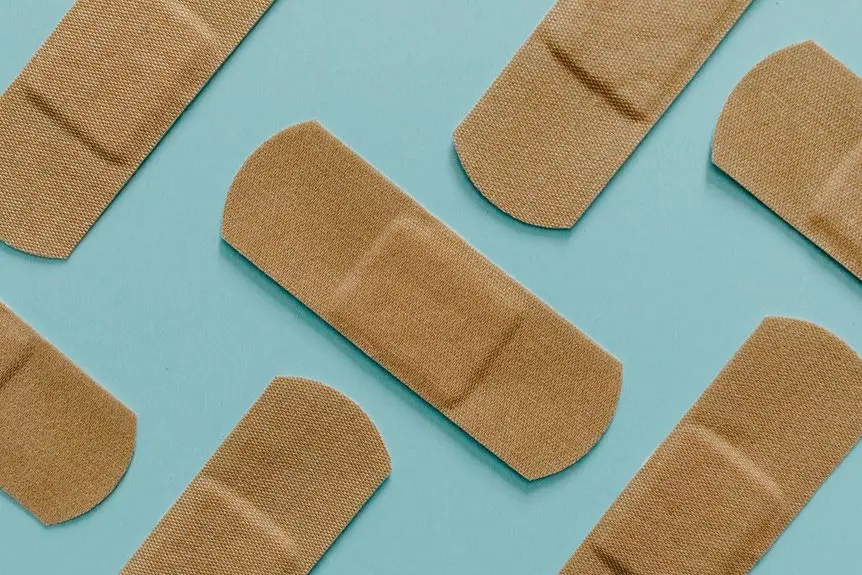When it comes to sun protection, not all fabrics are created equal. You might be surprised to learn that natural materials like hemp and linen can offer significant UV defense without relying on chemical treatments. Understanding how these fabrics work is essential for making informed choices. But what exactly makes these options stand out, and how do they compare to synthetic alternatives? Let’s explore the details that could impact your sun-safe wardrobe.
Table of Contents
Key Takeaways
- Fabrics like hemp and linen provide very high UV protection naturally without the need for chemical treatments.
- Tightly woven cotton and darker-colored materials enhance UV defense while remaining chemical-free.
- Bamboo fabrics can offer moderate to high UV protection and are often produced without harmful chemicals.
- Choosing natural fibers supports eco-friendly practices and reduces the risk of skin irritation.
- Look for garments with a UPF rating of 30 or higher for effective sun protection without chemicals.
Understanding UPF Ratings and Their Importance
When you’re choosing fabrics for sun protection, understanding UPF ratings is essential. UPF, or Ultraviolet Protection Factor, measures how effectively a fabric blocks UV radiation. A higher UPF rating means better protection; for instance, a fabric with a UPF of 50 allows only 1/50th of UV rays to reach your skin.
This rating helps you make informed decisions about clothing, especially for outdoor activities. Look for garments with a UPF of 30 or higher for effective sun defense.
Keep in mind that factors like color, weave, and fabric type also influence protection levels. By paying attention to UPF ratings, you can confidently choose clothing that shields you from harmful UV rays, ensuring your skin stays safe while enjoying the sun.
Natural Fabrics With High UV Protection
While synthetic fabrics often dominate the sun protection landscape, natural fabrics can also offer impressive UV defense. Choosing the right materials can make a significant difference in shielding your skin from harmful rays. Here’s a quick overview of some natural fabrics that provide high UV protection:
| Fabric Type | UV Protection Level |
|---|---|
| Cotton | Moderate |
| Linen | High |
| Hemp | Very High |
| Bamboo | Moderate to High |
When selecting clothing, consider these options for effective sun protection. Wearing tightly woven, darker-colored fabrics will enhance your defense against UV exposure. Plus, you’ll enjoy the benefits of comfort and breathability that natural fabrics provide!
Benefits of Choosing Chemical-Free Fabrics
Choosing chemical-free fabrics not only benefits your skin but also contributes to a healthier environment. By opting for these materials, you’re making choices that promote sustainability and reduce harmful impacts.
Here are some key benefits:
- Skin Health: You minimize the risk of skin irritation and allergic reactions, ensuring comfort for all skin types.
- Environmental Impact: Chemical-free fabrics reduce pollution and conserve water, supporting eco-friendly practices.
- Biodegradability: Many natural fibers break down more easily, lessening landfill waste compared to synthetic options.
- Durability: Often, these fabrics are more resilient, meaning your clothing lasts longer, saving you money in the long run.
The Role of Weave and Fabric Structure in Sun Protection
Understanding how the weave and structure of a fabric affect its sun protection capabilities is vital for making informed choices. Tightly woven fabrics generally offer better UV protection because they create a denser barrier against harmful rays.
The weave and structure of fabric are crucial for effective sun protection; tightly woven materials provide superior UV defense.
Conversely, loosely woven materials allow more light to pass through, reducing their protective qualities.
The thickness of the fabric also plays a significant role; thicker fabrics can block more UV radiation.
Additionally, the type of fibers used can influence protection levels. For example, natural fibers like cotton can provide decent protection, but synthetic options, like polyester, often have superior UV-blocking properties due to their tighter weaves.
When selecting your sun protection gear, always consider these factors to guarantee you’re adequately shielded from the sun.
Comparing Comfort and Performance of Natural vs. Synthetic Fabrics
When it comes to sun protection, the choice between natural and synthetic fabrics can significantly impact both comfort and performance. Understanding their differences helps you make an informed decision.
- Breathability: Natural fabrics like cotton and linen allow better airflow, keeping you cooler.
- Moisture-Wicking: Synthetic fabrics, such as polyester, often excel at pulling sweat away from the skin, enhancing comfort during physical activities.
- Durability: Synthetic materials generally resist wear and tear better, lasting longer against UV exposure.
- Allergies: Natural fabrics are less likely to irritate sensitive skin, making them a safer choice for many.
Ultimately, your needs and preferences will guide the best fabric choice for sun protection without sacrificing comfort.
Frequently Asked Questions
How Do I Care for Natural UPF Fabrics?
To care for natural UPF fabrics, you should wash them in cold water with mild detergent, avoid bleach, and line dry. Don’t wring or twist, as this can damage the fibers and reduce effectiveness.
Can I Dye Natural UPF Fabrics Without Losing Protection?
You can dye natural UPF fabrics, but it might reduce their protective qualities. If you decide to dye, use cool water and gentle methods to minimize any loss of UV protection, ensuring you maintain some effectiveness.
Are There Specific Brands Known for Chemical-Free UPF Clothing?
You’ll find several brands specializing in chemical-free UPF clothing, like Patagonia and Columbia. They prioritize natural fibers and innovative designs, ensuring you stay protected from the sun while enjoying comfort and style in your outdoor adventures.
How Does the Weight of Fabric Affect Sun Protection?
The weight of fabric directly impacts sun protection. Heavier fabrics typically block more UV rays, while lighter ones may allow more sunlight to penetrate. Choosing the right weight can enhance your defense against harmful UV exposure.
Can I Layer Natural Fabrics for Enhanced UV Protection?
Yes, you can layer natural fabrics for enhanced UV protection. By combining lightweight, tightly woven materials, you create a barrier against harmful rays, improving your overall sun safety while still enjoying comfort and breathability.
- Tetron Fabric for Marine Applications: Durability and Use Cases - June 18, 2025
- Tetron Fabric for Outdoor Furniture: Weather Resistance and Care - June 18, 2025
- Tetron Fabric for Wall Coverings: Style and Application Tips - June 18, 2025







